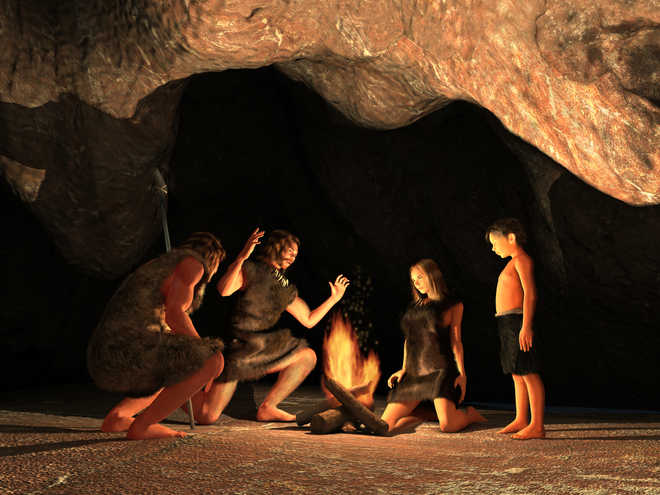
Photo source: Thinkstock
London
Modern humans and Neanderthals emerged from a common recent ancestor and the first fossil analysis of a Neanderthal boy's skeleton recovered from Spain has revealed that the kid grew just like a modern-day child would.
The boy, identified as El Sidron J1, was 7.7 years old, weighed 26 kilos and measured 111 centimetres at the time of death.
His partial skeleton was found among the remains of 13 individuals, dating back around 50,000 years, at the north Spanish site of El Sidron.
"Applying paediatric growth assessment methods, this Neanderthal child is no different to a modern-day child," said study co-author Luis Rios of Spanish National Research Council (CSIC).
The study published in the journal Science showed that the growth and development of this juvenile Neanderthal matches the typical characteristics of humans, where there is a slow anatomical growth between weaning and puberty.
This could compensate for the immense energy cost of developing a large brain, the study said.
"Developing a large brain involves significant energy expenditure and, consequently, this hinders the growth of other parts of the body. In sapiens, the development of the brain during childhood has a high energetic cost and, as a result, the development of the rest of the body slows down," lead researcher Antonio Rosas of the Spanish National Research Council said.
The researchers found that the skeleton and dentition of this Neanderthal child presented a physiology which is similar to that of a sapiens of the same age, except for the thorax area, in that it is less developed.
"The growth of our Neanderthal child was not complete, probably due to energy saving," Rosas explained.
The only divergent aspect in the growth of both species is the moment of maturation of the vertebral column.
In all hominids, the cartilaginous joints of the middle thoracic vertebrae and the atlas are the last to fuse, but in this Neanderthal, fusion occurred about two years later than in modern humans.
"The delay of this fusion in the vertebral column may indicate that Neanderthals had a decoupling of certain aspects in the transition from infancy to the juvenile phase. Although the implications are unknown, this feature could be related to the characteristic enlarged shape of the Neanderthal torso, or slower brain growth," Rosas said. — IANS



























